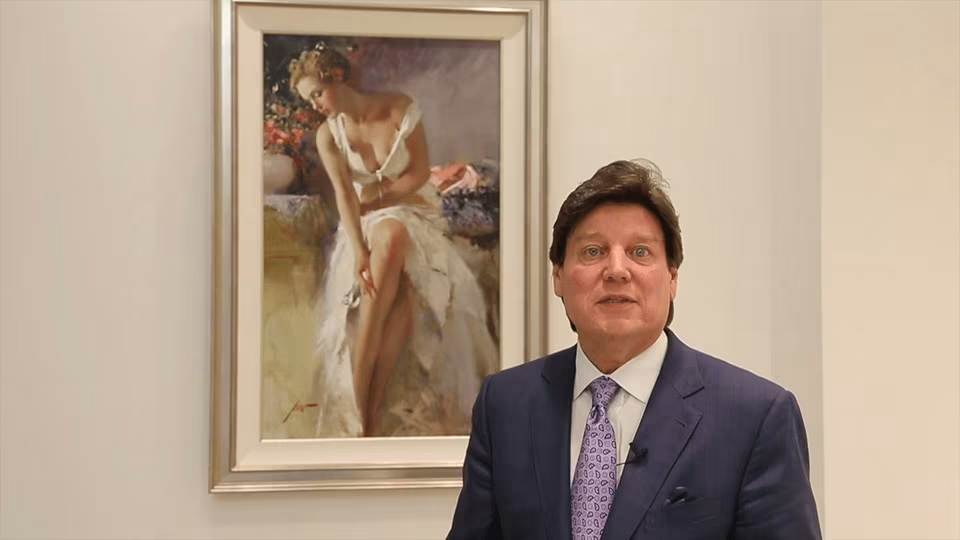30+ Years of Experience
3k+ Real Patient Reviews
10,000+ Breast Surgeries Performed
Texas Super Doctor
Gynecomastia (Male breast reduction) in Houston
For men who feel self-conscious about their chest’s appearance, Gynecomastia surgery Houston offers a tailored solution to enhance chest contours. Dr. Vitenas specializes in this procedure, helping patients achieve a more defined and masculine look, empowering them to feel confident in their bodies.

Discover why patients from across the U.S. and around the world choose Dr. Vitenas as their premier Houston surgeon.
Male Breast Reduction Before & After Photos





Each Patient is Unique and Individual Results May Vary
What Is Gynecomastia?

Gynecomastia is a common condition characterized by swollen or enlarged male breasts due to excess fat and breast tissue. This excess breast tissue can result in feminine-appearing breasts that make men feel self-conscious about their chests.
Gynecomastia affects an estimated 40-60% of men, which makes it actually quite common. While gynecomastia sometimes occurs in infants due to maternal hormones, it more commonly develops during puberty when hormone levels fluctuate. However, men of any age can develop gynecomastia, and the incidence increases with age.
Causes of Breast Enlargement in Men
- Hormonal Imbalance – A hormonal imbalance between testosterone and estrogen can cause breast tissue growth. Testosterone naturally decreases as men age. Certain health conditions like hypogonadism, hyperthyroidism, kidney failure, or tumors may also cause low testosterone and higher estrogen levels.
- Obesity and Weight Gain – Being overweight or obese can increase breast size in men due to excess fatty tissue. Losing weight may help mild cases, but significant glandular breast tissue will still likely require surgery.
- Medications – Certain prescription drugs can cause gynecomastia as a side effect by impacting hormone levels. These include anabolic steroids, HIV medications, antibiotics, heart medications, ulcer medications, and more. Discuss any medications with Dr. Vitenas.
- Illegal Drugs and Alcohol – Excessive alcohol consumption and the use of amphetamines, heroin, and marijuana have been linked to gynecomastia. Anabolic steroid abuse is another common cause. All impact hormones.
- Health Conditions – Chronic conditions like liver failure, kidney failure, hyperthyroidism, tumors, and hypogonadism can influence hormone levels and fibrous breast tissue growth. Treatment of the underlying condition may help resolve gynecomastia.
- Aging – As men age, testosterone levels naturally decrease while body fat increases. This hormonal change often leads to gynecomastia development in older males. Lowered testosterone is linked to excess breast tissue.
- Pubertal Gynecomastia – Hormone fluctuations during puberty commonly cause temporary breast swelling and tenderness in boys. While it often resolves after puberty, severe cases may warrant treatment.
- Idiopathic Gynecomastia – For up to 75 percent of patients, the specific cause of their gynecomastia remains unknown despite diagnosis. This is termed idiopathic gynecomastia.
Gynecomastia Surgery Benefits
Excess breast tissue may cause men to feel self-conscious about wearing fitted shirts or swimwear. Gynecomastia surgeries eliminate the excess tissue, and patients often feel comfortable wearing a broader range of clothing that reveals their leaner, firmer chest contour.
Overall, gynecomastia surgery can renew your confidence to comfortably dress, move and live life without embarrassment or discomfort caused by excess breast tissue. By removing the excess tissue, male breast reduction helps patients achieve the masculine chest they desire.
What to Expect During Your Consultation
The initial consultation provides an opportunity to discuss your goals and determine if you are a good candidate for male breast reduction. Dr. Vitenas will:
- Review your health history and medications
- Examine your chest and assess the extent of gynecomastia
- Discuss procedural details and recommend a customized treatment plan
- Explain the recovery process and follow-up care
The Male Breast Reduction Procedure
Gynecomastia surgery is typically performed under general anesthesia as an outpatient procedure at Dr. Vitenas’ state-of-the-art Houston Surgery Center. The surgery takes 1-2 hours to complete.
Gynecomastia typically involves liposuction and excision to eliminate glandular tissue or skin. The combination of these techniques varies based on individual needs. After surgery, dressings and a support garment are applied, with specific post-operative instructions provided for recovery. The procedure results in a more contoured chest profile.

Gynecomastia Surgical Technique
The two primary surgical techniques used in treating gynecomastia are liposuction and excision. Liposuction is often employed to remove excess fatty tissue, utilizing a thin tube inserted through small incisions to suction fat from the chest area. This method is particularly effective for cases where fat predominates over glandular tissue.
Excision techniques are used when glandular breast tissue or excess skin must be removed to achieve a more masculine chest contour. This might involve incisions around the nipple or under the arm, depending on the extent of tissue removal required. In cases where significant skin laxity is present, additional incisions may be necessary to tighten the skin and provide the desired chest flatness and firmness.
Treatment for gynecomastia varies, depending on factors like tissue type and skin elasticity. Mild cases may need only simple procedures for less scarring and faster recovery. More severe cases often require a mix of fat removal and tissue excision, sometimes including skin removal or nipple adjustment, for a better chest shape.

Recovery After Gynecomastia Surgery
The recovery period for gynecomastia surgery ranges from 1-2 weeks. A compression garment should be worn for several weeks to help control swelling as the treatment area heals. Most patients can return to school or light work within a week.
Temporary side effects may include:
- Swelling and bruising
- Mild discomfort
- Temporary numbness
For a smooth recovery and excellent results, patients should avoid strenuous exercise and alcohol consumption for at least 4 weeks after surgery as the chest continues to stabilize. Most swelling resolves within 6 months, and patients can see their final results at that time.
Candidates for Male Breast Reduction
The ideal candidates for gynecomastia surgery are men who are bothered by enlarged male breasts. Good overall health is important to ensure proper healing. Teenagers may benefit from surgery for severe pubertal gynecomastia. However, it is essential to consider the patient’s emotional maturity and readiness for such a procedure and that it is unlikely to resolve on its own.
Ideally, the issues contributing to the enlarged breasts will be identified, such as medication use or health conditions. While this isn’t always possible, doing so ensures that the problem will not reoccur after Dr. Vitenas surgically corrects it.



Dr. Paul Vitenas, Your Houston Surgeon
Choosing an experienced, board-certified plastic surgeon is important for safe gynecomastia surgery and optimal aesthetic results.
Key factors to consider when choosing a surgeon include:
- Extensive experience performing male breast reduction
- Aesthetic sensibility for properly contouring the chest
- A Bedside manner that puts patients at ease
- Uses an accredited surgical facility
Dr. Paul Vitenas is a highly acclaimed and board-certified plastic surgeon renowned for his exceptional skills in cosmetic procedures. With a career spanning over three decades, Dr. Vitenas has performed numerous gynecomastia procedures, solidifying his position as one of the early pioneers in this field. His reputation as the go-to surgeon for gynecomastia surgery in Texas is built on a long history of delivering excellent results to his patients.
Gynecomastia FAQ
What is the cost of Gynecomastia surgery?
What is recovery like after male breast reduction?
Recovery takes 1-2 weeks for most patients. Swelling and bruising are common initially but are usually mild. A compression garment helps control swelling. Discomfort can be managed with medication, but Tylenol is often all that is needed. Most patients can return to work or school in about a week. Activities like heavy lifting and exercise should be avoided for 4-6 weeks as the chest continues to stabilize.
Can gynecomastia go away without surgery?
In some adolescent boys or men with mild glandular breast enlargement, gynecomastia will resolve spontaneously over time. However, most significant cases of gynecomastia require surgery for the removal of excess glandular tissue and fat to properly contour the chest.
What to expect after gynecomastia surgery?
The results you can expect are a flatter, firmer, and more contoured chest that appears more masculine, youthful, and proportionate to your body frame. Clothing will fit better, and you'll likely feel more comfortable going shirtless. While scarring is permanent, incisions are carefully placed to be minimally visible.
Is gynecomastia surgery painful?
You will be under general anesthesia during the procedure, so you will not feel any pain. Mild discomfort, tightness, and swelling are common during the first week of recovery. Dr. Vitenas will prescribe medication to keep you as comfortable as possible.
Is gynecomastia surgery worth it?
For men genuinely distressed by enlarged breast tissue, surgery can be extremely worthwhile and transformative. It provides aesthetic improvement along with restored comfort and self-confidence. Thoroughly researching board-certified surgeons and choosing a surgeon with a long history of providing excellent surgery helps ensure you get natural-looking results.
What are the treatment options for gynecomastia?
Treatment options for gynecomastia include medication, liposuction, surgical excision of breast tissue, or a combination of these approaches, depending on the severity and underlying cause of the condition.
What are the main symptoms of gynecomastia?
The main symptoms of gynecomastia include enlarged breast tissue, breast tenderness, and sometimes breast pain.
Can certain medications cause gynecomastia?
Yes, medications such as certain antipsychotics, antiandrogens, and anabolic steroids can contribute to the development of gynecomastia.
Is gynecomastia more common during puberty?
Yes, gynecomastia is relatively common during puberty due to hormonal fluctuations, and it often resolves on its own within a few months to a couple of years after puberty is over.
Can obesity increase the risk of developing gynecomastia?
Yes, obesity can increase the risk of gynecomastia as excess body fat can lead to hormonal changes that promote the growth of breast tissue.
Are there any natural remedies for gynecomastia?
While there are no proven natural remedies for gynecomastia, maintaining a healthy lifestyle, including regular exercise and a balanced diet, may help manage symptoms associated with the condition.
How is gynecomastia different from pseudogynecomastia?
Gynecomastia refers to the enlargement of breast tissue in males, whereas pseudogynecomastia is the accumulation of fat in the breast area, often caused by obesity.
Can gynecomastia be mistaken for breast cancer?
Gynecomastia can sometimes be mistaken for breast cancer due to the presence of a breast lump. However, gynecomastia is a benign condition and is not associated with an increased risk of breast cancer.
Will gynecomastia surgery leave visible scars?
Gynecomastia surgery may leave scars, but their visibility depends on factors such as the surgical technique used and the patient's healing process. Dr. Vitenas will discuss scar management options with you.
Will gynecomastia surgery leave visible scars?
Gynecomastia surgery may leave scars, but their visibility depends on factors such as the surgical technique used and the patient's healing process. Dr. Vitenas will discuss scar management options with you.
Can gynecomastia surgery be performed on teenagers?
Except in the case of extreme symptoms, teenaged boys are recommended to wait until they are closer to adulthood to pursue surgical correction. Most teenagers who experience gynecomastia in adolescence will see their symptoms reduced as they get closer to adulthood. However, if a young male is entering adulthood and his gynecomastia symptoms do not appear to be resolving, then corrective surgery may be the best option. Consulting with a qualified plastic surgeon can help patients decide if they should wait, or pursue surgery.
Will gynecomastia surgery affect my ability to exercise?
Gynecomastia surgery may temporarily affect your ability to exercise, particularly intense activities involving the chest muscles, but most patients can resume normal exercise routines after recovery. Most swelling resolves within 6 months, and patients can see their final results at that time.
How long does gynecomastia surgery take?
The duration of gynecomastia surgery varies depending on the extent of the procedure, but it typically takes between one to two hours to complete.


